Costa Rica is home to many species of bluebirds, some of which can be found nowhere else in the world. These birds are a delight to watch, as they flit from tree to tree, singing their beautiful songs.
From the bright blue of the Turquoise-browed Motmot to the cobalt shades of the Blue-crowned Motmot, Costa Rica’s bluebirds are a colorful addition to the country’s rich avian life.
In this introduction, we will explore some of the different types of bluebirds found in Costa Rica as well as the habitats in which they live.
1. White-Throated Magpie-Jay
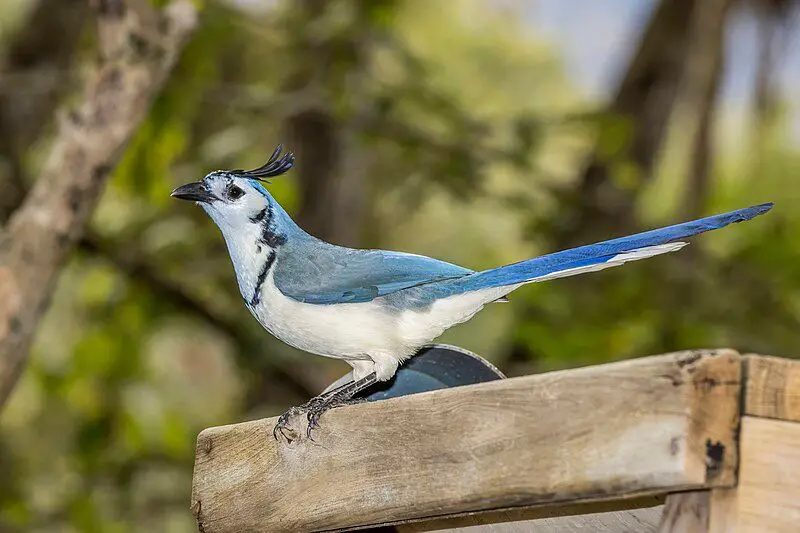
The white-throated magpie-jay is a large bird species native to Central America. Its range extends from Jalisco, Mexico to Guanacaste, Costa Rica, where it is found in the Pacific-slope thorn forest.
Magpie-jays are known for their loud, gregarious behavior and often travel in flocks that are easily spotted. They are also known to mob observers, meaning they will fly close to the observer and create a ruckus.
This behavior can be seen as a warning for potential predators or an expression of curiosity. Magpie jays are a common species across Central America and are often seen in parks and gardens as well as in their natural habitat.
| Kingdom | Animalia |
| Phylum | Chordata |
| Class | Aves |
| Order | Passeriformes |
| Family | Corvidae |
| Genus | Calocitta |
| Species | C. formosa |
2. Scarlet Macaw
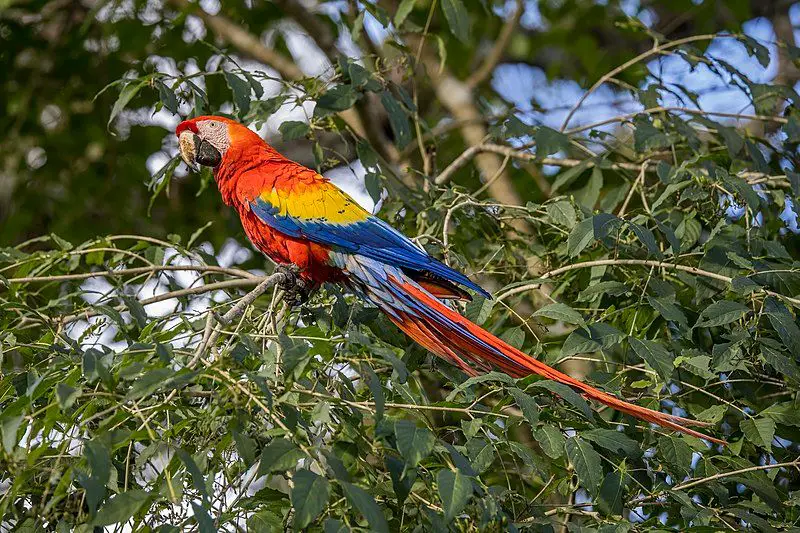
The scarlet macaw is a beautiful and majestic bird. It is classified as a Neotropical parrot, which means it is native to the Americas. It is quite large, measuring an average of 80 centimeters in length from the tip of its beak to the end of its tail.
Its feathers are a vibrant combination of yellow, red and blue, making it an eye-catching sight to behold. It is mainly found in humid evergreen forests, where it is able to find its favorite food sources, such as fruits, nuts and seeds.
It is also known to eat insects, lizards and small vertebrates. The scarlet macaw is an important part of the ecosystem in these forests, as it helps to disperse seeds and pollinate flowers.
It is also an important symbol of the rainforest, and its presence and health are indicative of a healthy and thriving ecosystem.
| Kingdom | Animalia |
| Phylum | Chordata |
| Class | Aves |
| Order | Psittaciformes |
| Family | Psittacidae |
| Genus | Ara |
| Species | A. macao |
3. Blue-Gray Tanager
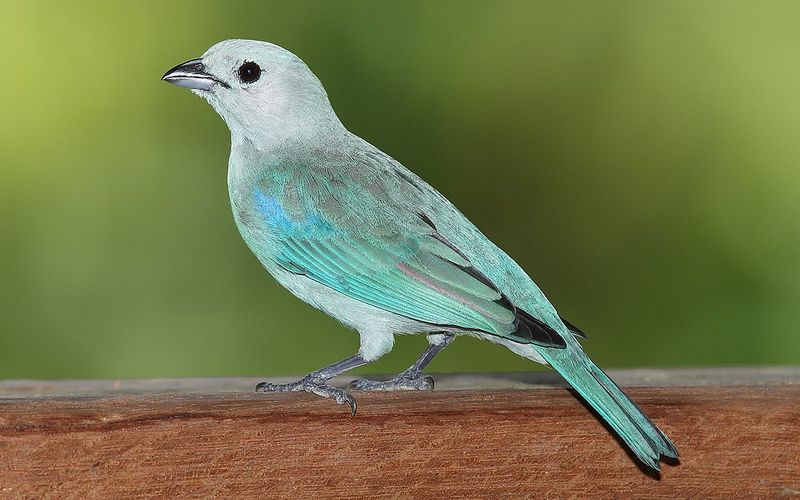
The blue-gray tanager is a species of bird found in the Thraupidae family, which is native to South America. This bird is found in Mexico, all the way down to northeast Bolivia and northern Brazil, as well as the entire Amazon Basin.
It has also been introduced to the city of Lima in Peru. The blue-gray tanager is also known as the blue jean on the islands of Trinidad and Tobago. This medium-sized songbird is characterized by its grayish-blue plumage, a trait that has given it its distinctive name.
In terms of habitat, the blue-gray tanager prefers humid and wet tropical forests, but it can also be found in other habitats, such as woodlands, savannas, and even some open areas. It feeds mainly on insects, but will also feed on small fruits.
It is an active and vocal bird, and its song is quite unique, consisting of a series of short and rapid notes.
| Kingdom | Animalia |
| Phylum | Chordata |
| Class | Aves |
| Order | Passeriformes |
| Family | Thraupidae |
| Genus | Thraupis |
| Species | T. episcopus |
4. Great Green Macaw
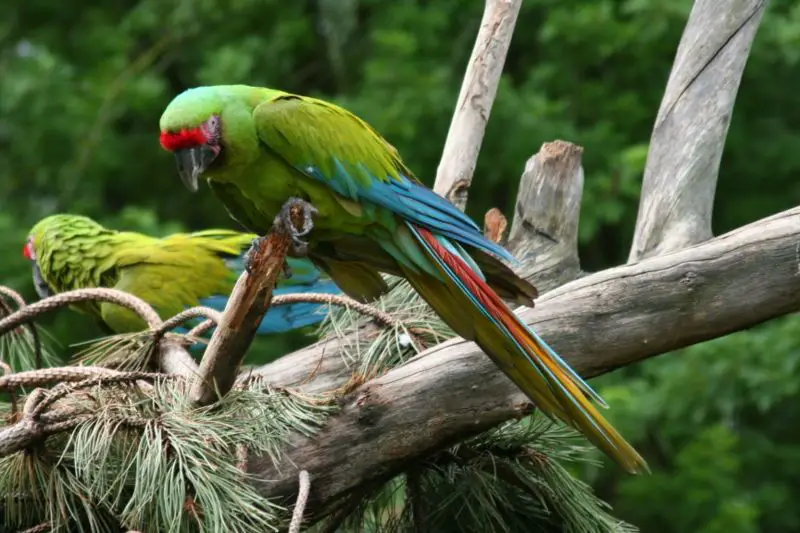
The great green macaw is a large and stunning parrot native to Central and South America. It is also known as Buffon’s Macaw or the great military macaw.
The great green macaw is a critically endangered species, with its population having declined rapidly due to habitat loss and illegal pet trading.
The bird is mainly found in Nicaragua, Honduras, Costa Rica, Panama, Colombia, and Ecuador. The great green macaw is a large bird, with most adults reaching up to 90 centimetres in length.
It is primarily bright green in colour, with some blue and yellow feathers on its wings and tail. Its beak is bright yellow, with a black tip, and its eyes are dark brown. The great green macaw is an omnivorous bird, mainly eating fruits, nuts, and seeds.
It is also known to eat insects, eggs, and small vertebrates. The bird lives in a variety of habitats, from tropical lowland rainforests to dry deciduous forests. The great green macaw is a social bird, living in flocks of up to 30 individuals.
They are known to mate for life, and the female lays 2-4 eggs in a tree cavity. The chicks fledge after 10-12 weeks, and are then independent of their parents. Unfortunately, the great green macaw is facing a very real threat of extinction.
The main threats are habitat loss due to deforestation, and illegal pet trading. Conservation efforts are underway to protect the remaining population, including creating protected areas and public awareness campaigns.
| Kingdom | Animalia |
| Phylum | Chordata |
| Class | Aves |
| Order | Psittaciformes |
| Family | Psittacidae |
| Genus | Ara |
| Species | A. ambiguus |
5. Amazonian Motmot
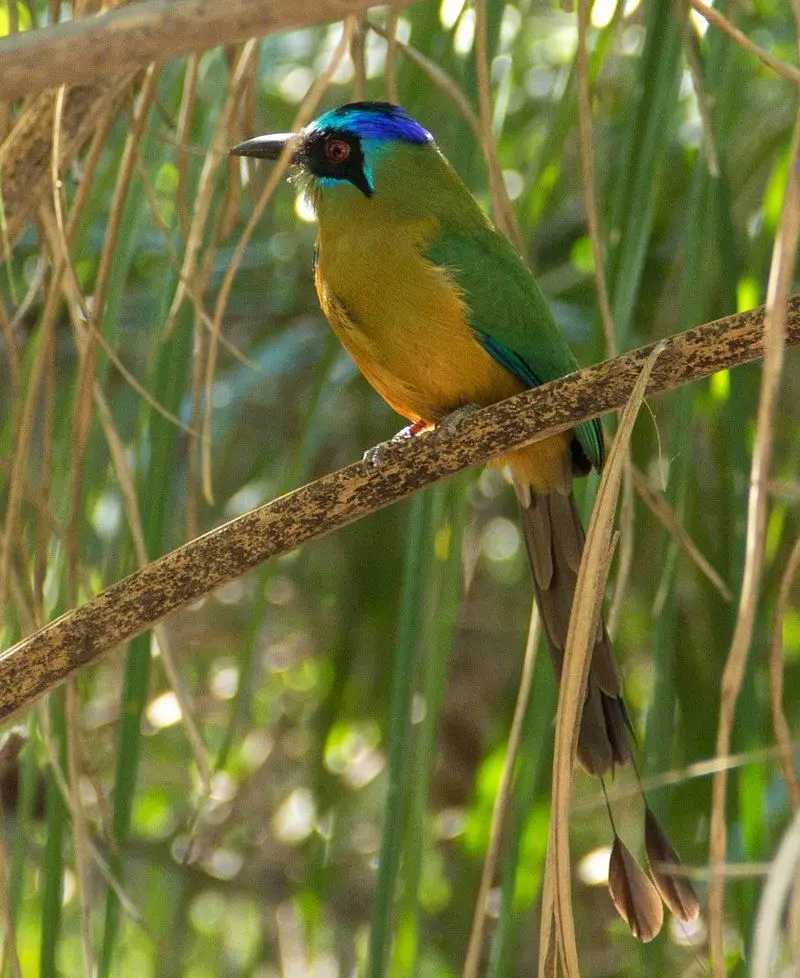
The Amazonian motmot is a vibrant and attractive near-passerine bird that belongs to the family of Momotidae.
This bird is common in the Amazon lowlands and low foothills of the Andes Mountains in South America, ranging from eastern Venezuela to eastern Brazil and northeastern Argentina.
Its plumage is characterized by bright colors such as blue, green, yellow, and red, making it stand out from other species of birds in its environment. The Amazonian motmot has a particularly unique feature – a long, racket-shaped tail with two elongated central feathers.
This tail is usually displayed when the bird is perched, which is an impressive sight. The Amazonian motmot is an omnivorous bird with a diet that consists of both animal and plant matter.
It typically feeds on invertebrates and small vertebrates such as lizards, frogs, and rodents, as well as fruits and seeds. In addition, it may also take advantage of the bounty of carrion that is sometimes available in its range.
The Amazonian motmot has several adaptations that make it well-suited to its environment, including its ability to fly swiftly through the air. It also has sharp vision and a keen sense of hearing, which help it locate its prey.
Additionally, its long tail feathers help it to balance while flying and maneuvering through the air. The Amazonian motmot is a common species of bird that can be found in the Amazon lowlands and low Andean foothills of South America.
With its beautiful colors and unique tail feathers, the Amazonian motmot is an impressive sight to behold.
| Kingdom | Animalia |
| Phylum | Chordata |
| Class | Aves |
| Order | Coraciiformes |
| Family | Momotidae |
| Genus | Momotus |
| Species | M. momota |
6. White-Necked Jacobin
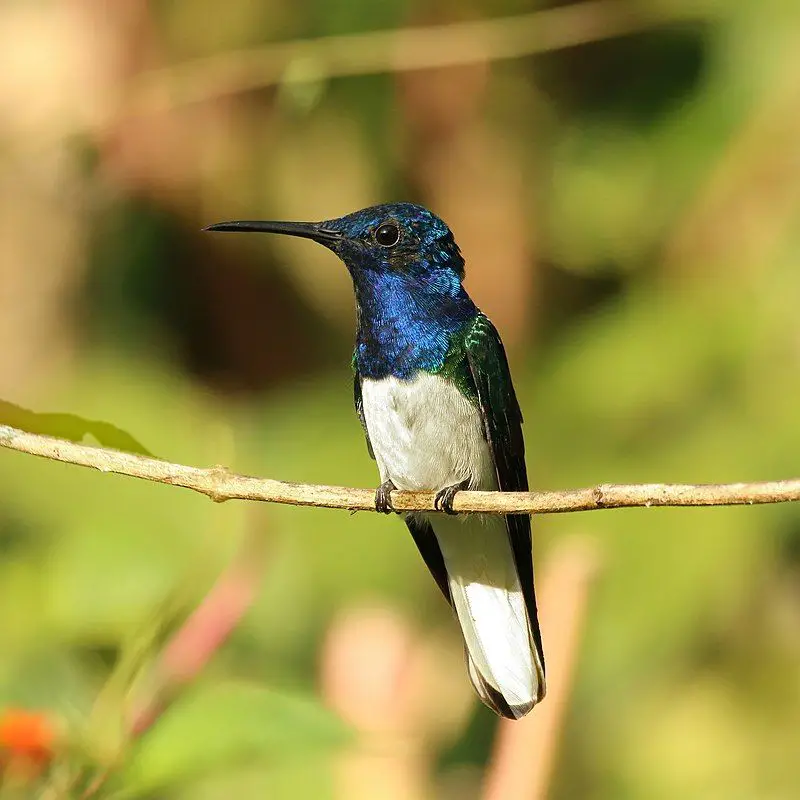
The white-necked jacobin is a species of medium-sized hummingbird found in a variety of countries throughout Central and South America.
It is particularly common in Mexico, but can also be found in Central American countries such as Guatemala and Honduras, as well as countries in northern South America such as Brazil, Peru, and Bolivia. It can also be spotted in Trinidad and Tobago.
This species of hummingbird is known by a variety of names, including great Jacobin and collared hummingbird. The white-necked jacobin is easily distinguished by its strikingly white neck, which stands out in stark contrast with its otherwise dark feathers.
The rest of its body is a deep, glossy green, with a distinctive red line running from the base of the neck to the beginning of its tail. The bird is relatively small in size, with a wingspan of around 4.5 inches.
Its beak is slender and curved, and it has a small, pointed tail. The white-necked jacobin is a territorial species, typically found in lowlands and in open woodlands.
It is most commonly spotted near water sources such as rivers, streams, and waterfalls, where it feeds on nectar and small insects. It is an active bird and is often seen hovering or flying quickly from one flower to the next.
It is a vocal species and produces a loud, buzzy song. The white-necked jacobin is an important species in its range, as it plays an essential role in pollination and the dispersal of seeds.
It is also a popular species with birdwatchers and is a popular sight in many birding hotspots.
| Kingdom | Animalia |
| Phylum | Chordata |
| Class | Aves |
| Clade | Strisores |
| Order | Apodiformes |
| Family | Trochilidae |
| Genus | Florisuga |
| Species | F. mellivora |
7. Spot-Crowned Woodcreeper
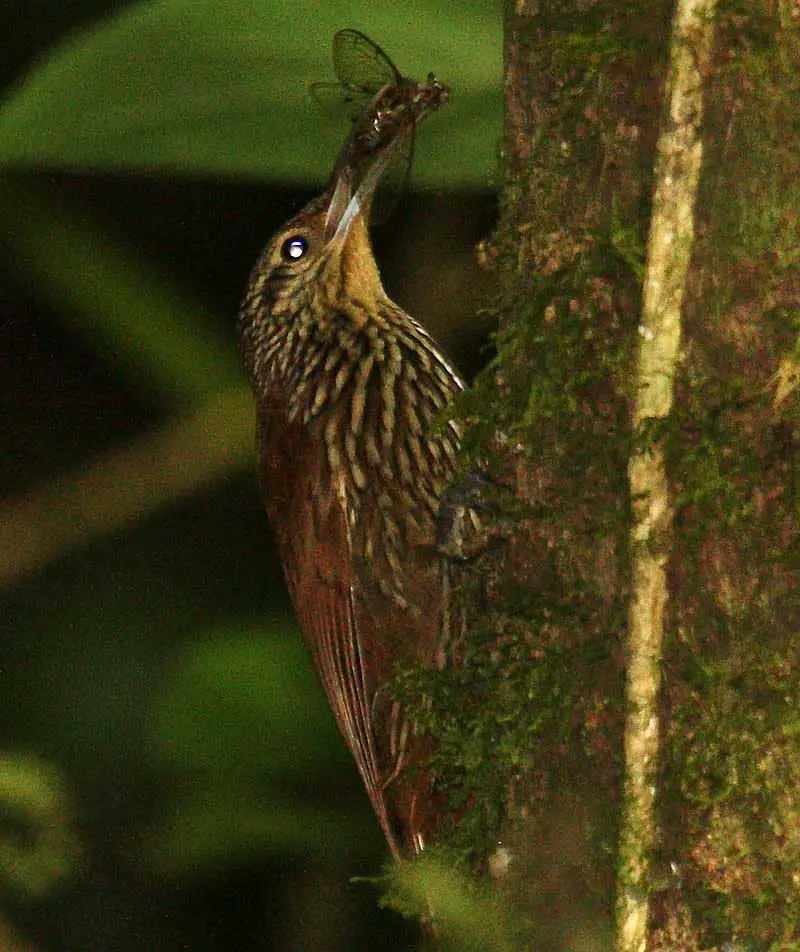
Source: Wikipedia
The Spot-Crowned Woodcreeper is a medium-sized bird that belongs to the Ovenbird family (Furnariidae) and the subfamily Dendrocolaptinae. This species is found in Middle America, ranging from Mexico to Panama.
The Spot-Crowned Woodcreeper has a distinctive black and white striped crown, set atop a brown back and wings. Its belly is white and its tail is long and pointed. It is an agile climber and forager, using its long, sharp bill to excavate insects from bark and crevices.
This species is usually seen alone or in pairs, and it is often heard before it is seen, with its distinctive “tuk-tuk-tuk” calls echoing through the forest.
The Spot-Crowned Woodcreeper is a shy and elusive species, and its population numbers are believed to be stable, although further research is needed to accurately assess its conservation status.
| Kingdom | Animalia |
| Phylum | Chordata |
| Class | Aves |
| Order | Passeriformes |
| Family | Furnariidae |
| Genus | Lepidocolaptes |
| Species | L. affinis |
8. Brown Pelican
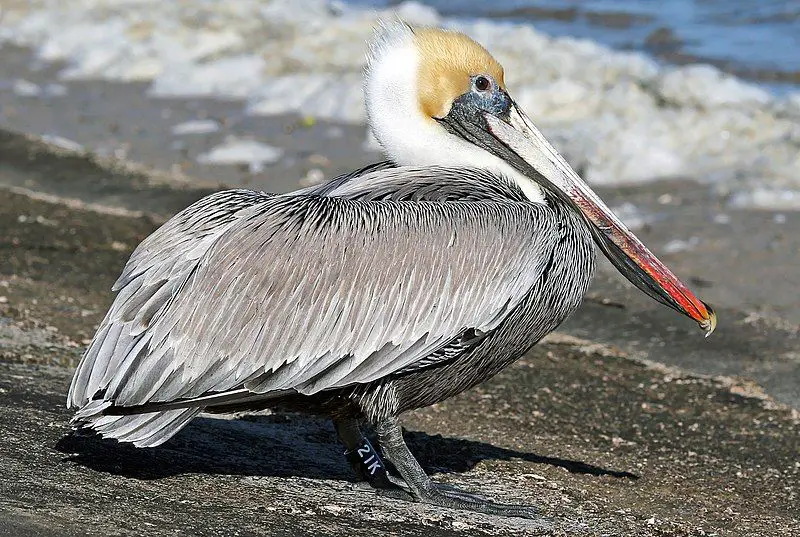
The brown pelican is a large bird belonging to the Pelecanidae family. This family includes several species of pelicans that are found throughout the Americas. Among these species, the brown pelican is one of two species that feed by diving into the water.
This method of feeding is quite unique among birds, and it requires the brown pelican to have a specialized set of physical traits and behaviors. The brown pelican has a large, wide beak that is used to scoop up fish from the water.
It also has long wings that allow it to dive deep into the water in search of food. Furthermore, the brown pelican has webbed feet that help it to stay afloat after a dive.
Its plumage is also adapted for diving, as the feathers are waterproof and help to keep the pelican warm when it is submerged. The brown pelican is an impressive and unique species, and it is important to conserve its habitat so that its special way of life can continue.
| Kingdom | Animalia |
| Phylum | Chordata |
| Class | Aves |
| Order | Pelecaniformes |
| Family | Pelecanidae |
| Genus | Pelecanus |
| Species | P. occidentalis |
9. Magpie-Jays
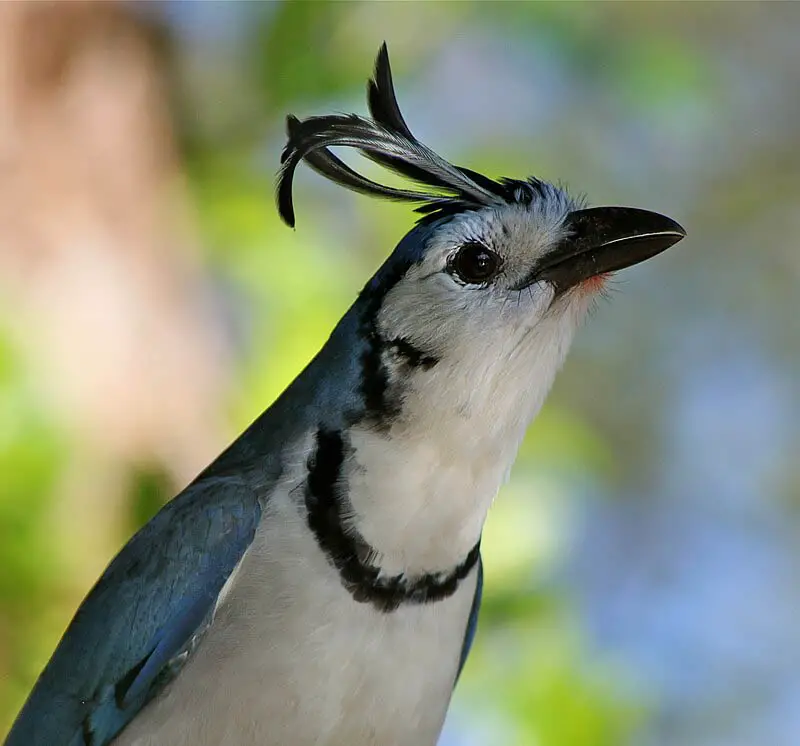
Source: Wikipedia
The magpie-jays are a genus of bird, called Calocitta, which belongs to the Corvidae family. They are native to the southern part of North America, although some sources place them in a different genus called Cyanocorax.
The magpie-jays genus consists of two species, and it is known that these two species are able to form hybrids when they breed.
Hybrids are the result of two different species breeding together, which creates offspring with a combination of characteristics from both of the parent species.
Hybrids are not as common as standard breeding, but they can occur when two different species are living in the same environment and have the opportunity to breed together.
The magpie-jays have an interesting hybridization behavior due to their ability to form hybrids, and it is believed that this behavior has helped the species to survive and thrive in their native habitat.
| Kingdom | Animalia |
| Phylum | Chordata |
| Class | Aves |
| Order | Passeriformes |
| Family | Corvidae |
| Genus | Calocitta |
10. Tanagers
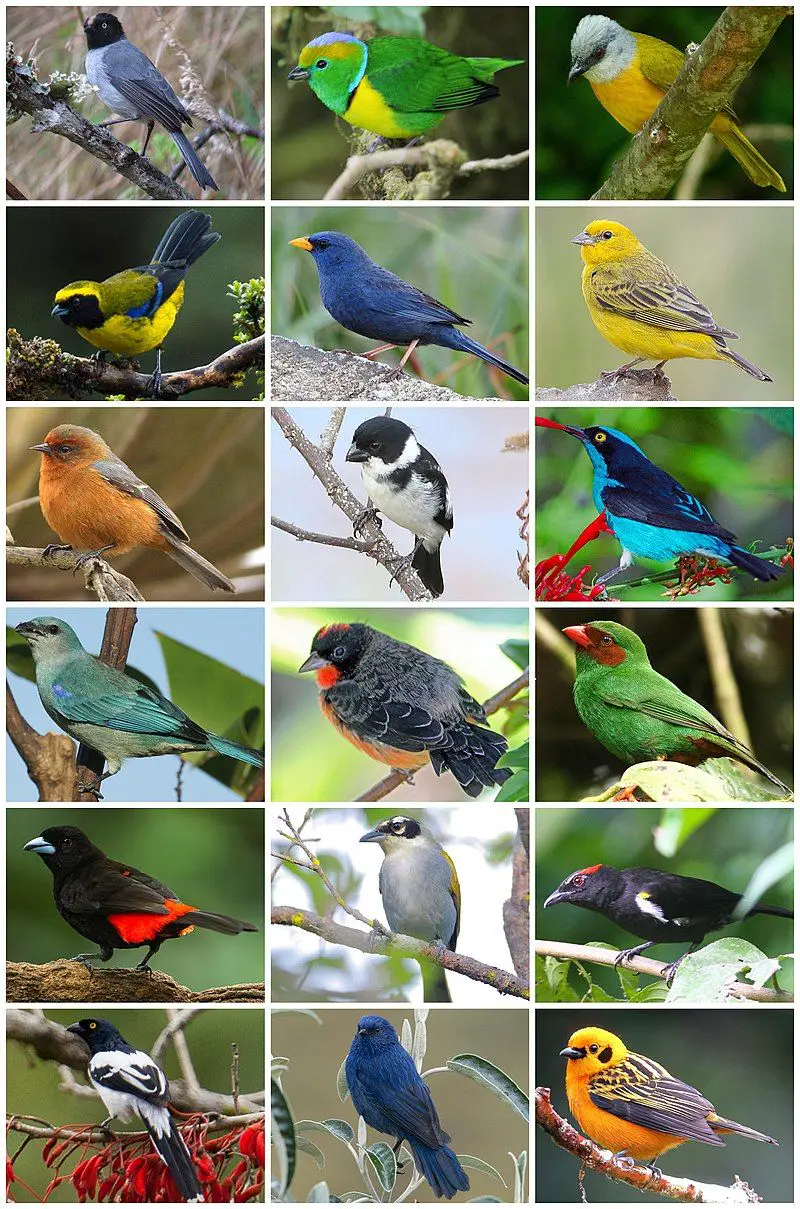
The tanagers are a group of birds belonging to the family Thraupidae, which are part of the order Passeriformes. This family of birds is found mostly in the Neotropical region, which is the region that encompasses Central and South America.
The Thraupidae family is the second largest family of birds, making up around 4% of all avian species and 12% of the birds in the Neotropical region. This large family of birds includes a wide variety of species, ranging from small, brightly colored birds to larger songbirds.
They are found in a variety of habitats, from tropical rainforests to more arid climates. The birds in this family are known for their colorful plumage and calls, making them a popular addition to bird feeders and birding trips.
| Kingdom | Animalia |
| Phylum | Chordata |
| Class | Aves |
| Order | Passeriformes |
| Family | Thraupidae |
11. Thrush
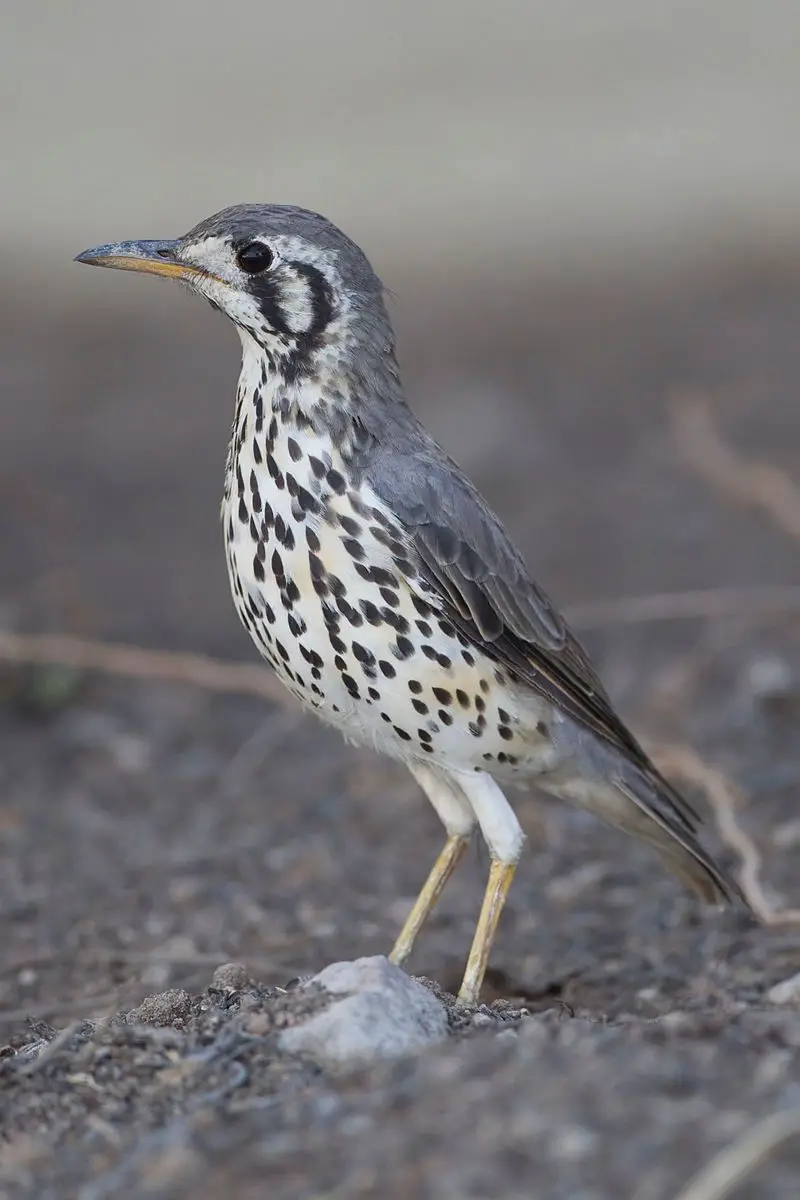
The thrushes are a type of passerine bird which can be found all over the world. They belong to the family Turdidae, which is a large family of birds. The family was even larger before biologists looked into it further.
Biologists split up the subfamily Saxicolinae, which includes the chats and European robins, and classified them as their own family, the Old World flycatchers. This created two distinct families, each with its own unique species.
The thrushes still remain in the family Turdidae, while the chats and European robins are now part of the Old World flycatchers. This means that the thrushes now have a smaller family, but still have a wide distribution across the world.
| Kingdom | Animalia |
| Phylum | Chordata |
| Class | Aves |
| Order | Passeriformes |
| Family | Turdidae |
12. Silvery-Throated Jay
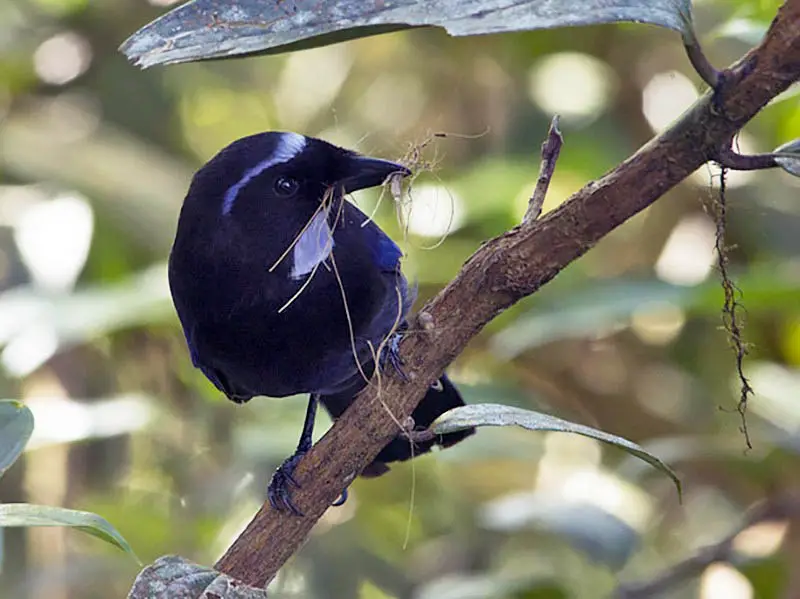
Source: ebird.org
The silvery-throated jay is a species of bird that belongs to the Corvidae family. It is found in the mountainous forests of Costa Rica and western Panama, known as the Talamancan montane forests.
The International Union for Conservation of Nature (IUCN) has classified this species as being of “least concern” in terms of conservation status.
This means that the species is not in danger of becoming endangered or extinct, as it is abundant and is not facing any serious threats from human activities or other factors.
The silvery-throated jay is quite common in its range and is found in various habitats, including open woodland, secondary-growth forest, and scrub. It feeds on fruits, insects, and small animals, and is known to be an active forager.
It is a fairly large bird, with a length of around 35 cm and a wingspan of up to 60 cm. Its plumage is mostly black and grey, with a distinctive silvery-white throat that gives it its name.
The silvery-throated jay is a species that is generally not threatened in its range and is considered to be of least concern by the IUCN.
| Kingdom | Animalia |
| Phylum | Chordata |
| Class | Aves |
| Order | Passeriformes |
| Family | Corvidae |
| Genus | Cyanolyca |
| Species | C. argentigula |
13. Red-Legged Honeycreeper
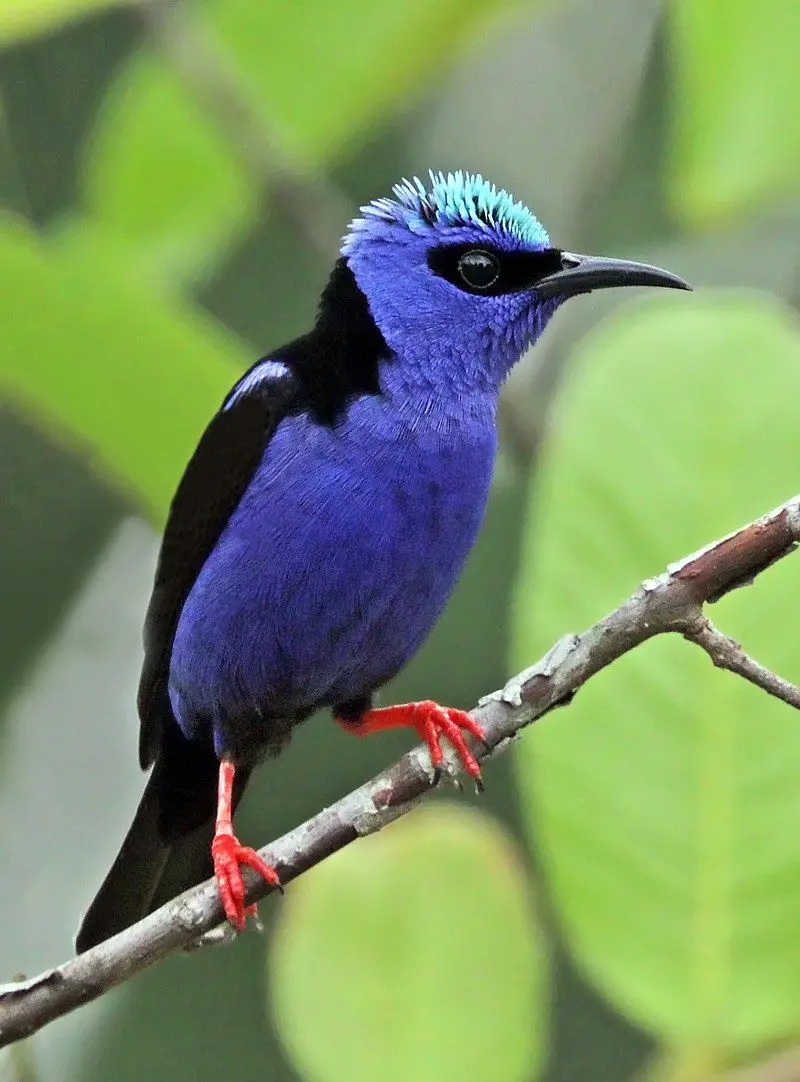
The red-legged honeycreeper is a species of small songbird found in the tanager family.
Its range extends from southern Mexico south to Peru, Bolivia and central Brazil, and it is also present in Trinidad and Tobago and Cuba, although it may have been introduced to the latter island. Occasionally, it can also be spotted in southern Texas.
This species is generally found in tropical regions, which is why it is mostly concentrated in the New World. Its plumage is primarily yellow, with black and white stripes on its wings, and its distinctive red legs are what give the bird its name.
In its natural environment, the red-legged honeycreeper can be found in tropical forests, mangroves, and second-growth habitats. It is an omnivore, meaning that it feeds on a variety of both plant and animal matter, such as insects, fruits, and nectar.
The red-legged honeycreeper is a common species in its range and is not currently threatened with extinction. However, its population has declined in some areas due to habitat destruction.
Therefore, conservation efforts should be made to ensure that this species remains abundant and healthy into the future.
| Kingdom | Animalia |
| Phylum | Chordata |
| Class | Aves |
| Order | Passeriformes |
| Family | Thraupidae |
| Genus | Cyanerpes |
| Species | C. cyaneus |
14. Tropical Kingbird
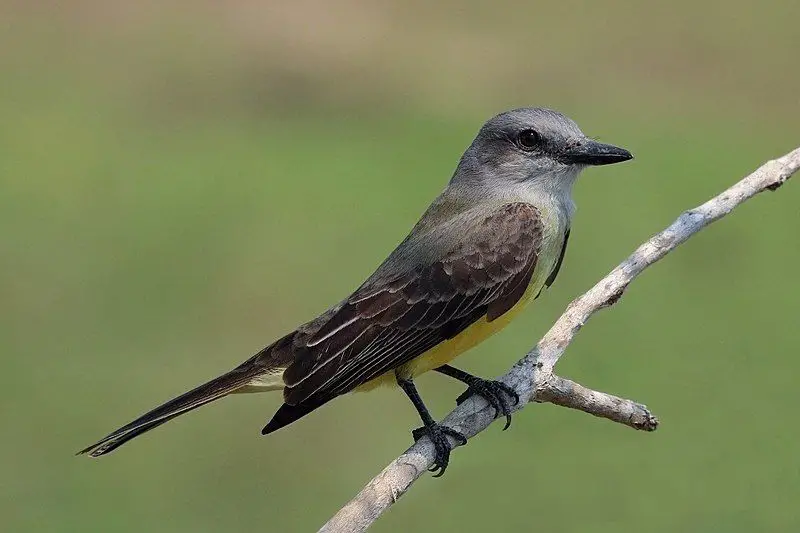
The tropical kingbird is a large tyrant flycatcher species that is native to a wide range of regions in the Americas.
It breeds from southern Arizona and the lower Rio Grande Valley of Texas in the United States, stretching through Central America and South America as far south as central Argentina and eastern Peru, and up to Trinidad and Tobago.
This flycatcher is typically a migratory species, and in the summertime can be found in more northern regions of the United States and even Canada.
It is easily identifiable by its bright yellow underparts and dark grayish-brown upperparts and is usually seen perched atop branches or wires.
It is an opportunistic predator, feeding on small insects as well as small fruits and berries, and can often be seen hovering in mid-air to catch its prey.
| Kingdom | Animalia |
| Phylum | Chordata |
| Class | Aves |
| Order | Passeriformes |
| Family | Tyrannidae |
| Genus | Tyrannus |
| Species | T. melancholicus |
15. Scarlet-Rumped Tanager
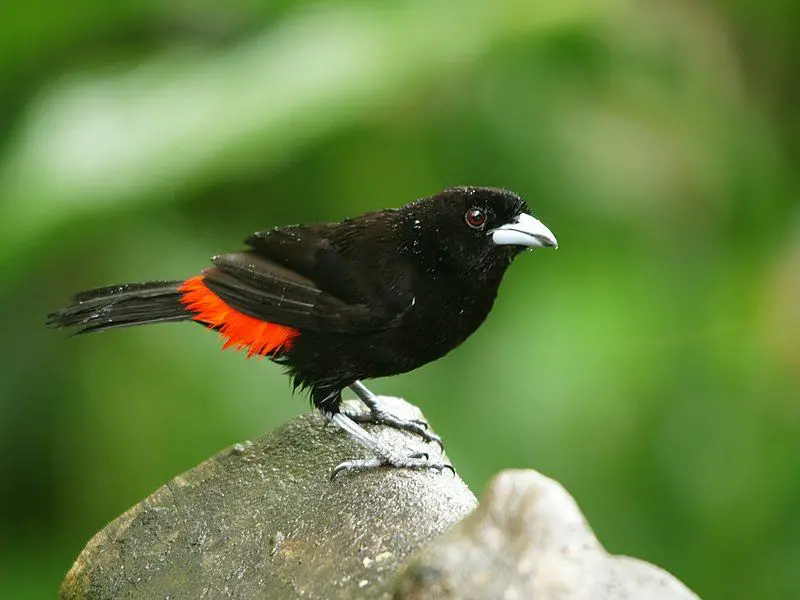
The scarlet-rumped tanager is an attractive passerine bird, easily identified by its bright coloration. It is medium-sized, usually measuring between 16-18 centimeters in length. The tanager is found in the Caribbean lowlands, ranging from southern Mexico to western Panama.
It is a resident breeder, meaning it does not migrate to other areas, but rather stays in the same area year-round. The scarlet-rumped tanager lives in a variety of habitats, such as open woodland, scrub, or orchards.
It usually feeds on insects, berries, and other small food items. This species is also known to hybridize with other tanagers, producing unique offspring.
Overall, the scarlet-rumped tanager is a beautiful bird with a wide range of habitats, making it a great addition to any backyard birding experience.
| Kingdom | Animalia |
| Phylum | Chordata |
| Class | Aves |
| Order | Passeriformes |
| Family | Thraupidae |
| Genus | Ramphocelus |
| Species | R. passerinii |
Conclusion
The bluebirds of Costa Rica are a majestic and beautiful species that play an important role in the country’s ecosystem. Their presence is a sign of a healthy environment, and their absence is a sign of environmental degradation.
As a result, it is important to protect these birds and their habitat for future generations. With proper conservation efforts, the blue birds of Costa Rica will remain a beloved species for many years to come.
